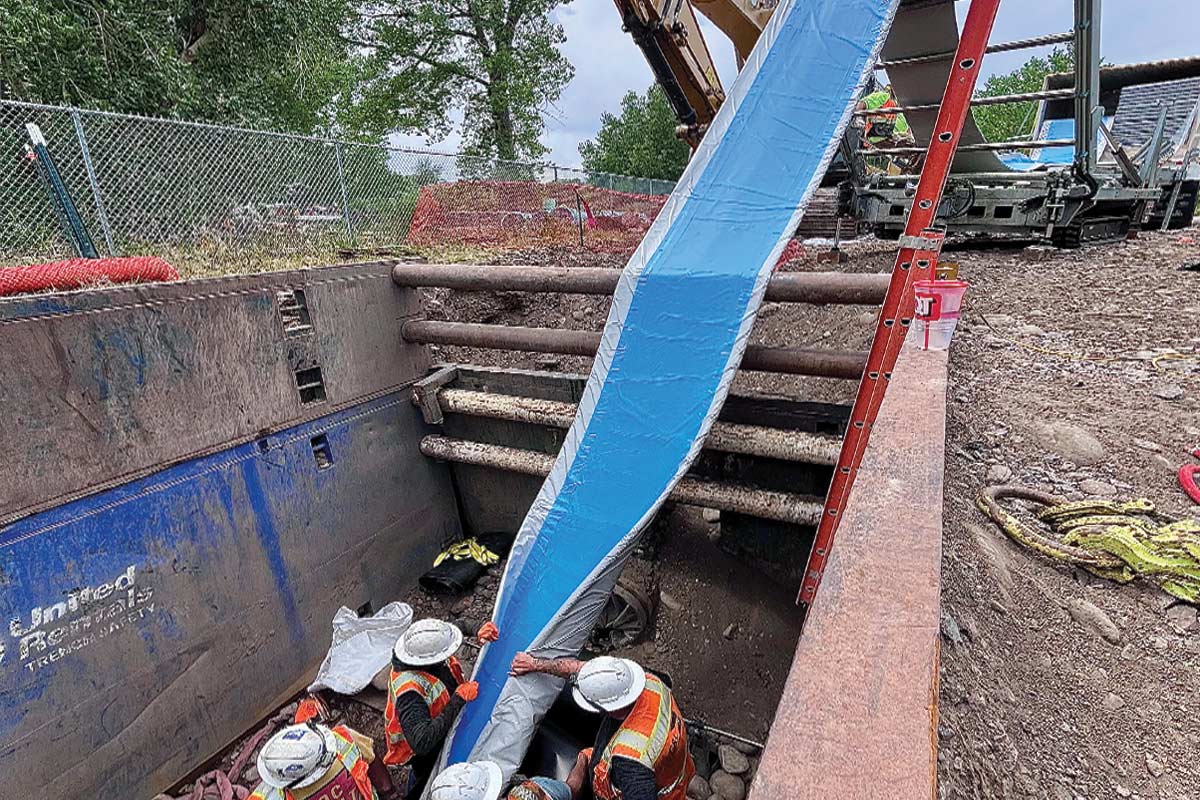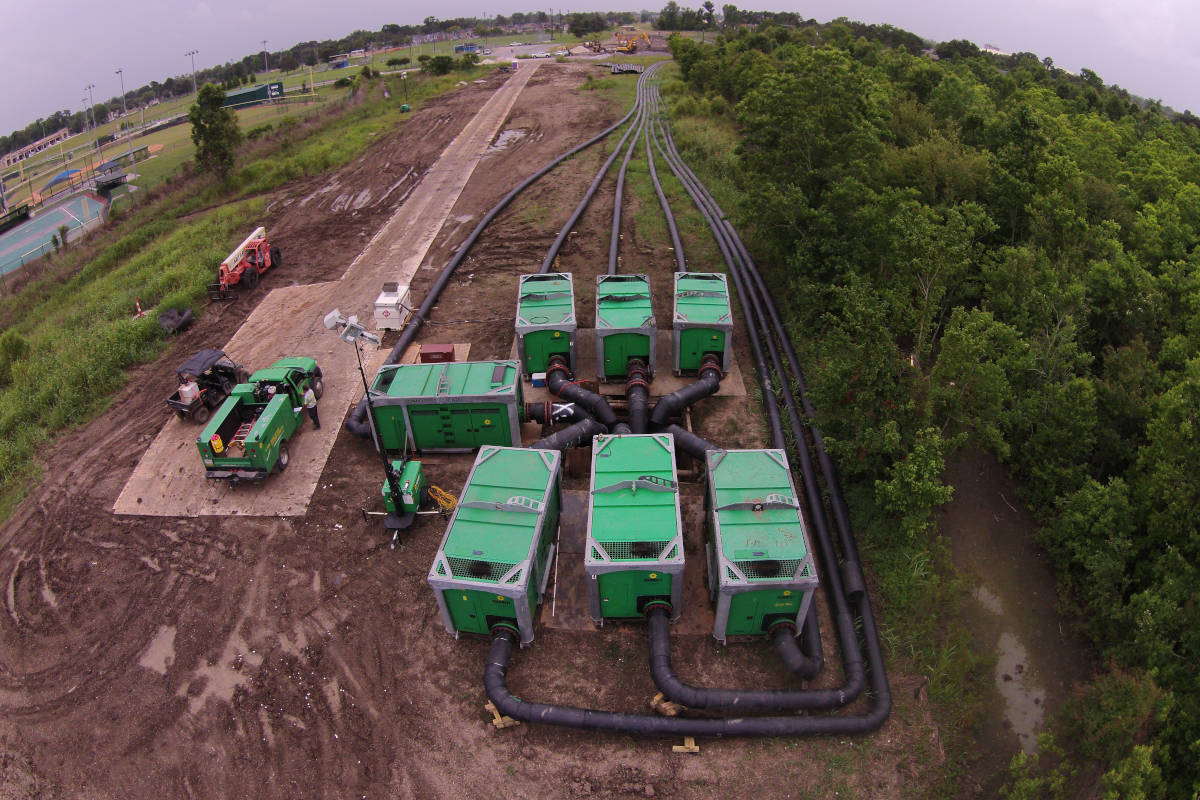
Corroded and Leaking Stormwater Outfall, in an Exclusive Florida Community, is Rehabilitated with Spray-applied Epoxy Lining
A 350-ft, 52-in. x 90-in., stormwater outfall pipe, serving an exclusive residential community in Palm Beach, Florida, had been deteriorating for years. Its proximity to the Intracoastal Waterway and exposure to a saltwater environment had simply taken their toll. Although not in immediate danger of collapse, I&I conditions were getting worse and at the time of the repair, roughly 2.5 million gallons of water were leaking from of the system per month.
Previous attempts to coat the pipe in an effort to stop the I&I had failed, and the City was seeking a more permanent and proven rehabilitation solution. Without a repair, there were legitimate concerns about the outfall’s long-term structural integrity.
RELATED: Geopolymers Support Long-Term Viability in Manhole Rehabilitation
Recommended Solution
Given the highly corrosive saltwater environment within the outfall pipe, the specification called for an epoxy coating application that would satisfy the need for both a corrosion and leak proof barrier. Quadex Structure Guard, a well-known epoxy coating was recommended for it’s proven performance in similar conditions. Just as important to the epoxy is the application system. In this case, it was a sprayMASTER II polymeric coating rig developed by Quadex.
Findings
After performing a thorough inspection and complete condition assessment the installation contractor determined that the pipe could indeed be fully rehabilitated and did not need to be dug up and replaced. This in itself would not only save the owner money, it would drastically reduce any surface disruption, detours or road closures impacting the local residents.
During the inspection, the contractor identified several problems leading to the pipe’s sever infiltration and degradation.
The combination of time, tidal flows and saltwater was causing the old concrete pipe to corrode and leak throughout. Settling had also caused several joints to become offset, which was the primary cause for the pipe’s infiltration problems.
The Equipment
The sprayMASTER II trailer is a turnkey system and contains everything needed to clean, prep, repair and line the pipe. This also makes for a smaller footprint and tidier job site.
RELATED: Timberlake Named VP of Corporate Development at Vortex Companies
It comes fully equipped with a NEXGEN 110 cfm, 25 kw generator/compressor unit, Graco XP70 2:1 plural component sprayer kit, onboard liquid and 55 gallon drum heaters, remote manifold carriage, pressure monitor, two 5:1 transfer pumps, two drum agitators and a 5,000 psi portable pressure washer. Also onboard were approved repair and coating materials necessary to complete the job.

The Process
Bypass Challenges
Before any work could be performed, a bypass system had to be put in place to dewater the pipe on a daily basis. This was due to the rising and falling tide from the Intracoastal Waterway.
Key to any successful epoxy coating application is the ability to control the environment and minimize water flow within the pipe. Because of the proximity of this outfall pipe to the Intracoastal Waterway, an unusually high rate of dewatering was necessary. Even the bypass set-up proved to be a challenge. During normal tidal flow, the outfall was completely submerged for a significant portion of the day. Steel boxes, used to secure and house the bypass pumps, had to be bolted to the wall by a dive team.
Pipe & Vault Prep
In addition to miscellaneous debris and marine growth, a coal tar epoxy coating from early repair attempts was delaminating and had to be removed. A combination of sand blasting and hydro blasting were employed to accomplish that task. Additionally, the ceiling of the concrete vault was severely spalled to the point where the rebar was exposed. Using hammer drills and angle grinders, the spalling concrete was removed and the ceiling was structurally restored a Quadex high performance mortar.

The tunnel is prepped and ready to go.
Stopping the I&I:
Once all the loose material was removed, the pipe was primed and the voids and cracks were patched. The outfall pipe walls were then sealed using combination of hydraulic cement and gel coat grout specifically formulated to stop high flow infiltration.
RELATED: Spray-Applied Lining Systems Address Unique Infrastructure Problems
Applying 100 Percent Solids Epoxy for Corrosion Protection:
To protect the pipe and vault from future corrosion, Quadex Structure Guard 100 percent solids epoxy was spray applied at a 175 mil thickness. Since the pipe only had two entrances — one at the pump station and one at the pipe’s exit into the waterway— the material was spray applied using a special 300 Ft. heated hose that extended from the sprayMASTER II trailer. When applying Structure Guard, it’s critical to maintain consistent epoxy temperature and have the ability to spray the entire length of the pipe. This is a unique feature of the sprayMASTER II system.
Results:
Despite the challenge of keeping the outfall dewatered, the project was a success. The engineering design and approach to the solution more than satisfied the project objectives. Now relined with a corrosion resistant epoxy, the outfall will be leak and corrosion free for many years to come. Key to the overall success of this project was the proper specification of products, all of which have a history of success, and the equipment package specifically design to efficiently apply the materials for the highest level of QA and QC.

The tunnel is fully lined.
During a post installation inspection by a NACE Level 3 certified protective coatings inspector, a final adhesion test was taken on the Structure Guard epoxy, and it exceeded the spec by 200 percent.
Kit Jones is vice president of brand and marketing communications at Vortex Companies.




